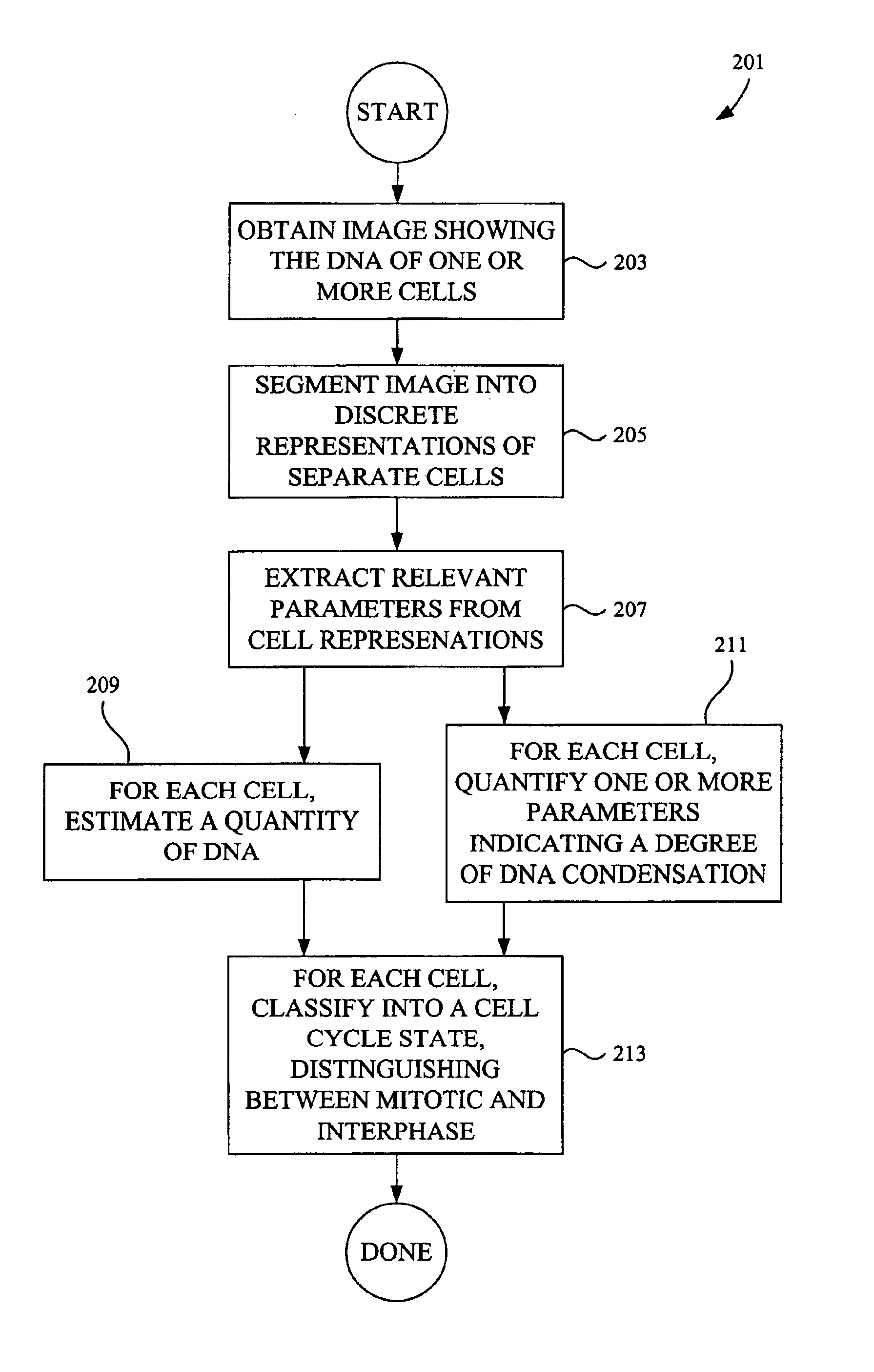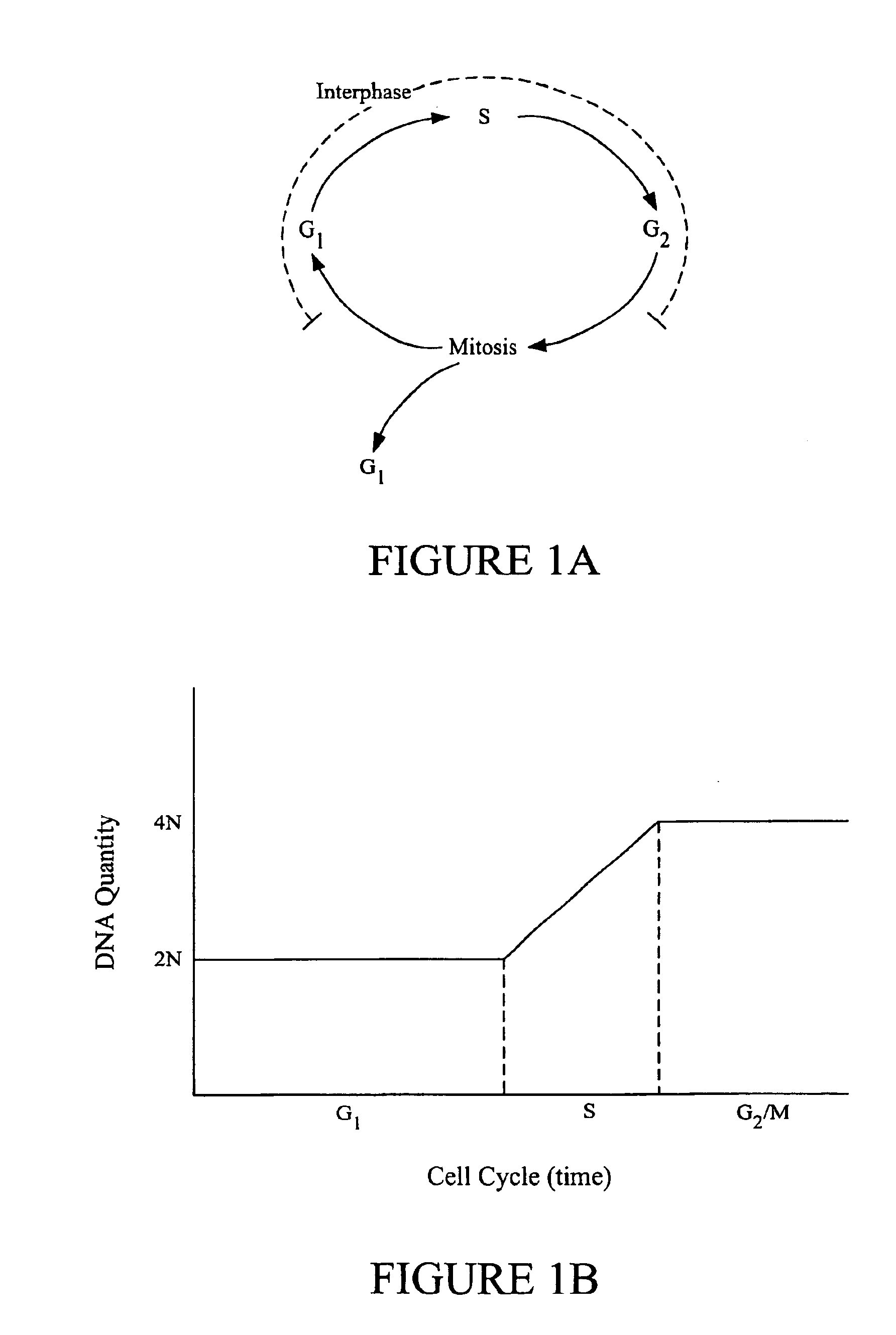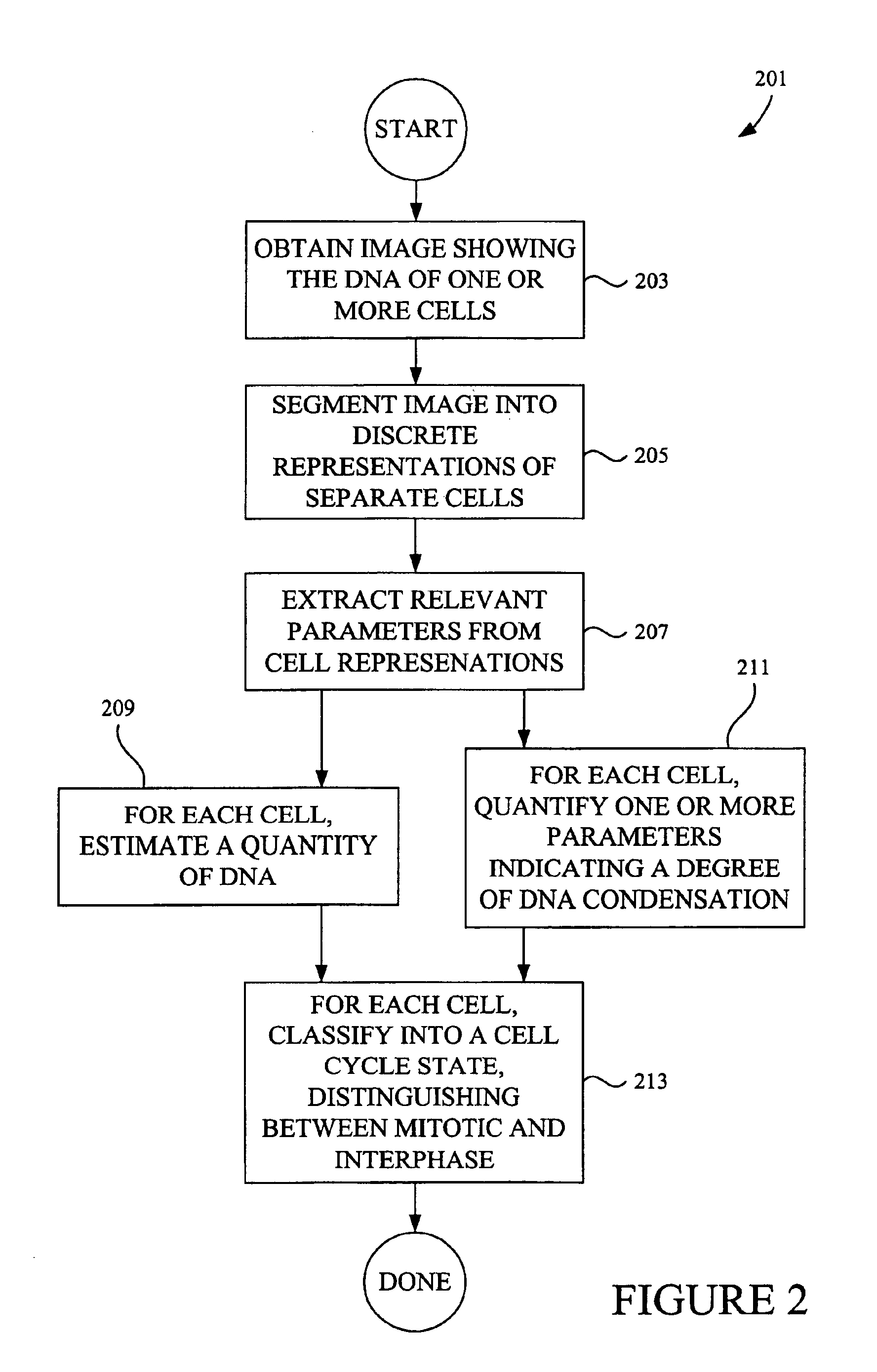Classifying cells based on information contained in cell images
a cell image and information technology, applied in the field of image analysis methods, can solve the problems of inability to distinguish between mitotic cells and gsub>2/sub>phase cells, information provided by fluorescence analyzers is too coarse for many applications,
- Summary
- Abstract
- Description
- Claims
- Application Information
AI Technical Summary
Benefits of technology
Problems solved by technology
Method used
Image
Examples
examples
FIGS. 14A-14G depict the results of an experiment in which human lung cancer epithelial cells were treated with Taxol and the effect of Taxol on the cell cycle was characterized. The specific cells used in this study were from Cell Line A549 (human lung cancer epithelial cells) (ATCC:CCL-185). Two day staged cell cultures of the A549 cells were trypsinized for five minutes from T175 cm flasks. The cells were then suspended in ten milliliters of RPMI media with ten percent serum and counted using both a hemocytometer and Coulter Counter. The suspension was diluted further in media to ensure that there were 1600 cells per twenty microliters in suspension. The cells were then counted again. Thereafter, they were transferred to a Cell Stir and kept in suspension while being plated into barcoded 384 well plates using a MultiDrop at twenty microliters per well. The plates were transferred to a humidified carbon dioxide incubator to recover for twenty-four hours before the addition of Taxo...
PUM
| Property | Measurement | Unit |
|---|---|---|
| wavelength | aaaaa | aaaaa |
| range of wavelengths | aaaaa | aaaaa |
| interface | aaaaa | aaaaa |
Abstract
Description
Claims
Application Information
 Login to View More
Login to View More - R&D
- Intellectual Property
- Life Sciences
- Materials
- Tech Scout
- Unparalleled Data Quality
- Higher Quality Content
- 60% Fewer Hallucinations
Browse by: Latest US Patents, China's latest patents, Technical Efficacy Thesaurus, Application Domain, Technology Topic, Popular Technical Reports.
© 2025 PatSnap. All rights reserved.Legal|Privacy policy|Modern Slavery Act Transparency Statement|Sitemap|About US| Contact US: help@patsnap.com



